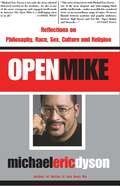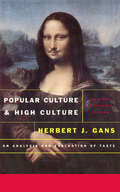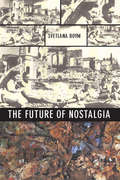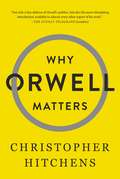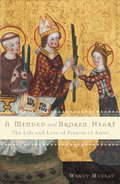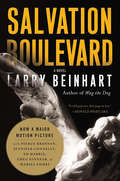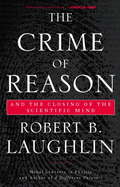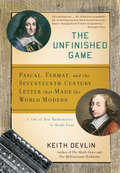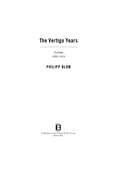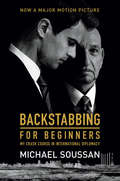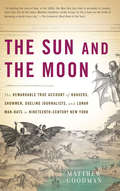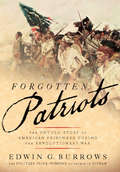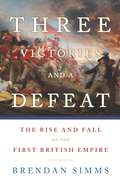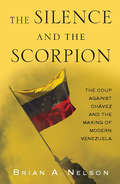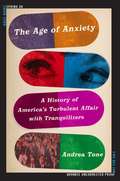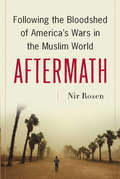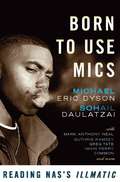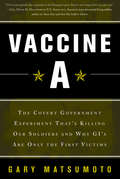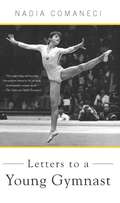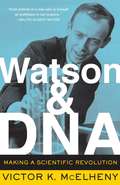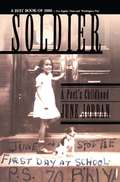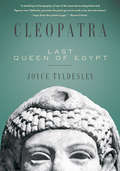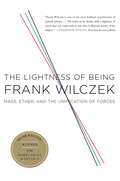- Table View
- List View
Open Mike
by Michael Eric DysonHere, collected for the first time, are interviews and essays representing Michael Eric Dyson's most important thinking on race and identity. Exploring such topics as "whiteness" as seen through a black man's eye, modernism and postmodernism in black culture, and the emancipating role of black music from the plantation to the ghetto, Open Mike is a perfect introduction to Dyson's work and a must-have for students and scholars in African American Studies and Cultural Studies.
Popular Culture and High Culture: An Analysis and Evaluation Of Taste
by Herbert GansIs NYPD Blue a less valid form of artistic expression than a Shakespearean drama? Who is to judge and by what standards?In this new edition of Herbert Gans's brilliantly conceived and clearly argued landmark work, he builds on his critique of the universality of high cultural standards. While conceding that popular and high culture have converged to some extent over the twenty-five years since he wrote the book, Gans holds that the choices of typical Ivy League graduates, not to mention Ph.D.'s in literature, are still very different from those of high school graduates, as are the movie houses, television channels, museums, and other cultural institutions they frequent.This new edition benefits greatly from Gans's discussion of the ”politicization” of culture over the last quarter-century. Popular Culture and High Culture is a must read for anyone interested in the vicissitudes of taste in American society.
The Future of Nostalgia
by Svetlana BoymCombining personal memoir, philosophical essay, and historical analysis, Svetlana Boym explores the spaces of collective nostalgia that connect national biography and personal self-fashioning in the twenty-first century. She guides us through the ruins and construction sites of post-communist cities--St. Petersburg, Moscow, Berlin, and Prague--and the imagined homelands of exiles-Benjamin, Nabokov, Mandelstahm, and Brodsky. From Jurassic Park to the Totalitarian Sculpture Garden, Boym unravels the threads of this global epidemic of longing and its antidotes.
Why Orwell Matters
by Christopher Hitchens"Hitchens presents a George Orwell fit for the twenty-first century." --Boston GlobeIn this widely acclaimed biographical essay, the masterful polemicist Christopher Hitchens assesses the life, the achievements, and the myth of the great political writer and participant George Orwell. True to his contrarian style, Hitchens is both admiring and aggressive, sympathetic yet critical, taking true measure of his subject as hero and problem. Answering both the detractors and the false claimants, Hitchens tears down the façade of sainthood erected by the hagiographers and rebuts the critics point by point. He examines Orwell and his perspectives on fascism, empire, feminism, and Englishness, as well as his outlook on America, a country and culture toward which he exhibited much ambivalence. Whether thinking about empires or dictators, race or class, nationalism or popular culture, Orwell's moral outlook remains indispensable in a world that has undergone vast changes in the seven decades since his death. Combining the best of Hitchens' polemical punch and intellectual elegance in a tightly woven and subtle argument, this book addresses not only why Orwell matters today, but how he will continue to matter in a future, uncertain world.
A Mended and Broken Heart: The Life and Love of Francis of Assisi
by Wendy MurrayFrancis of Assisi is Catholicism&’s most popular saint. Tens of millions of spiritual seekers summon his name and example. But the real Francis-both his complicated personality and his complex theology-have been misunderstood for centuries. In 1228, Pope Gregory IX rushed to canonize St. Francis only two years after his death. Soon thereafter, the Church eliminated significant aspects of his biography from the public record. For Francis&’s early life was defined by his profligacy; shortly before dying, Francis himself warned his brothers: &“Don&’t be too quick to canonize me. I am perfectly capable of fathering a child.&” In A Mended and Broken Heart, journalist Wendy Murray slices through the bowdlerized version of Francis&’s life promoted within the Catholic tradition and reveals instead a saint who was in every way also a real man. Murray stresses in particular the crucial but completely neglected role that Clare of Assisi played in Francis&’s life, both pre- and postconversion, and his theology. A profoundly humane portrait of a misunderstood saint, A Mended and Broken Heart makes a powerful case that St. Francis&’s life and thought make him a role model for religious seekers of every faith.
Salvation Boulevard: A Novel
by Larry BeinhartSome cases test a private investigator's wits, others test his courage, and still others, his character. In Salvation Boulevard, P.I. Carl Van Wagener has found a case that tests them all, and then goes on to test his soul. A professor is dead and a suspect-who has confessed-is in custody. But nothing is what it seems. After all, the dead man is an atheist professor, the accused an Islamic foreign student, the defense attorney a Jew, and the detective a Born Again Christian. As Carl gets deeper and deeper into the investigation of the death of professor Nathaniel MacLeod, his most basic beliefs and relationships are tried and his world is turned upside down. The mega-church, the pastor, and his new wife who have redeemed Carl from a life of grim debauchery insist on his dropping the case. But he can't stop searching for the real killer and the truth-no matter what the personal cost.Salvation Boulevard is a page-turning thriller in the tradition of John Grisham and Richard Condon that grapples with the ecstatic and entropic nature of religious faith in contemporary America.
The Crime of Reason: And the Closing of the Scientific Mind
by Robert B. LaughlinWe all agree that the free flow of ideas is essential to creativity. And we like to believe that in our modern, technological world, information is more freely available and flows faster than ever before. But according to Nobel Laureate Robert Laughlin, acquiring information is becoming a danger or even a crime. Increasingly, the really valuable information is private property or a state secret, with the result that it is now easy for a flash of insight, entirely innocently, to infringe a patent or threaten national security. The public pays little attention because this vital information is "technical”-but, Laughlin argues, information is often labeled technical so it can be sequestered, not sequestered because it's technical. The increasing restrictions on information in such fields as cryptography, biotechnology, and computer software design are creating a new Dark Age: a time characterized not by light and truth but by disinformation and ignorance. Thus we find ourselves dealing more and more with the Crime of Reason, the antisocial and sometimes outright illegal nature of certain intellectual activities.The Crime of Reason is a reader-friendly jeremiad, On Bullshit for the Slashdot and Creative Commons crowd: a short, fiercely argued essay on a problem of increasing concern to people at the frontiers of new ideas.
The Unfinished Game: Pascal, Fermat, and the Seventeenth-Century Letter that Made the World Modern (Basic Ideas Ser.)
by Keith DevlinIn the early seventeenth century, the outcome of something as simple as a dice roll was consigned to the realm of unknowable chance. Mathematicians largely agreed that it was impossible to predict the probability of an occurrence. Then, in 1654, Blaise Pascal wrote to Pierre de Fermat explaining that he had discovered how to calculate risk. The two collaborated to develop what is now known as probability theory-a concept that allows us to think rationally about decisions and events.In The Unfinished Game, Keith Devlin masterfully chronicles Pascal and Fermat's mathematical breakthrough, connecting a centuries-old discovery with its remarkable impact on the modern world.
The Vertigo Years: Europe, 1900-1914
by Philipp BlomEurope, 1900-1914: a world adrift, a pulsating era of creativity and contradictions. The major topics of the day: terrorism, globalization, immigration, consumerism, the collapse of moral values, and the rivalry of superpowers. The twentieth century was not born in the trenches of the Somme or Passchendaele-but rather in the fifteen vertiginous years preceding World War I.In this short span of time, a new world order was emerging in ultimately tragic contradiction to the old. These were the years in which the political and personal repercussions of the Industrial Revolution were felt worldwide: Cities grew like never before as people fled the countryside and their traditional identities; science created new possibilities as well as nightmares; education changed the outlook of millions of people; mass-produced items transformed daily life; industrial laborers demanded a share of political power; and women sought to change their place in society-as well as the very fabric of sexual relations.From the tremendous hope for a new century embodied in the 1900 World's Fair in Paris to the shattering assassination of a Habsburg archduke in Sarajevo in 1914, historian Philipp Blom chronicles this extraordinary epoch year by year. Prime Ministers and peasants, anarchists and actresses, scientists and psychopaths intermingle on the stage of a new century in this portrait of an opulent, unstable age on the brink of disaster.Beautifully written and replete with deftly told anecdotes, The Vertigo Years brings the wonders, horrors, and fears of the early twentieth century vividly to life.
Backstabbing for Beginners: My Crash Course in International Diplomacy
by Michael SoussanSoon to be a major motion picture starring Ben Kingsley and Theo James, the gripping true story of a young program coordinator at the United Nations who stumbles upon a conspiracy involving Iraq's oil reserves."What made this episode in our collective history possible was not so much the lies we told one another, but the lies we told ourselves."A recent Brown University graduate, Michael Soussan was elated when he landed a position as a program coordinator for the United Nations' Iraq Program. Little did he know that he would end up a whistleblower in what PBS NewsHour described as the "largest financial scandal in UN history."Breaking a conspiracy of silence that had prevailed for years, Soussan sparked an unprecedented corruption probe into the Oil-for-Food program that exposed a worldwide system of bribes, kickbacks, and blackmail involving ruthless power-players from around the globe.At the crossroads of pressing humanitarian concerns, crisis diplomacy, and multibillion-dollar business interests, Soussan's story highlights core flaws of our international system and exposes the frightening, corrupting power of the black elixir that fuels our world's economy.
Backstabbing for Beginners: My Crash Course in International Diplomacy
by Michael SoussanSoon to be a major motion picture starring Ben Kingsley and Theo James, the gripping true story of a young program coordinator at the United Nations who stumbles upon a conspiracy involving Iraq's oil reserves. "What made this episode in our collective history possible was not so much the lies we told one another, but the lies we told ourselves." A recent Brown University graduate, Michael Soussan was elated when he landed a position as a program coordinator for the United Nations' Iraq Program. Little did he know that he would end up a whistleblower in what PBS NewsHour described as the "largest financial scandal in UN history." Breaking a conspiracy of silence that had prevailed for years, Soussan sparked an unprecedented corruption probe into the Oil-for-Food program that exposed a worldwide system of bribes, kickbacks, and blackmail involving ruthless power-players from around the globe. At the crossroads of pressing humanitarian concerns, crisis diplomacy, and multibillion-dollar business interests, Soussan's story highlights core flaws of our international system and exposes the frightening, corrupting power of the black elixir that fuels our world's economy.
The Sun and the Moon: The Remarkable True Account of Hoaxers, Showmen, Dueling Journalists, and Lunar Man-Bats in Nineteen
by Matthew GoodmanOn August 26, 1835, a fledgling newspaper called the Sun brought to New York the first accounts of remarkable lunar discoveries. A series of six articles reported the existence of life on the moon-including unicorns, beavers that walked on their hind legs, and four-foot-tall flying man-bats. In a matter of weeks it was the most broadly circulated newspaper story of the era, and the Sun, a working-class upstart, became the most widely read paper in the world.An exhilarating narrative history of a divided city on the cusp of greatness, and tale of a crew of writers, editors, and charlatans who stumbled on a new kind of journalism, The Sun and the Moon tells the surprisingly true story of the penny papers that made America a nation of newspaper readers.
Forgotten Patriots: The Untold Story of American Prisoners During the Revolutionary War (Playaway Adult Nonfiction Ser.)
by Edwin G. BurrowsBetween 1775 and 1783, some 200,000 Americans took up arms against the British Crown. Just over 6,800 of those men died in battle. About 25,000 became prisoners of war, most of them confined in New York City under conditions so atrocious that they perished by the thousands. Evidence suggests that at least 17,500 Americans may have died in these prisons-more than twice the number to die on the battlefield. It was in New York, not Boston or Philadelphia, where most Americans gave their lives for the cause of independence.New York City became the jailhouse of the American Revolution because it was the principal base of the Crown's military operations. Beginning with the bumper crop of American captives taken during the 1776 invasion of New York, captured Americans were stuffed into a hastily assembled collection of public buildings, sugar houses, and prison ships. The prisoners were shockingly overcrowded and chronically underfed-those who escaped alive told of comrades so hungry they ate their own clothes and shoes.Despite the extraordinary number of lives lost, Forgotten Patriots is the first-ever account of what took place in these hell-holes. The result is a unique perspective on the Revolutionary War as well as a sobering commentary on how Americans have remembered our struggle for independence-and how much we have forgotten.
Three Victories and a Defeat: The Rise and Fall of the First British Empire
by Brendan SimmsIn the eighteenth century, Britain became a world superpower through a series of sensational military strikes. Traditionally, the Royal Navy has been seen as Britain's key weapon, but in Three Victories and a Defeat Brendan Simms argues that Britain's true strength lay with the German aristocrats who ruled it at the time. The House of Hanover superbly managed a complex series of European alliances that enabled Britain to keep the continental balance of power in check while dramatically expanding her own empire. These alliances sustained the nation through the War of the Spanish Succession, the War of the Austrian Succession, and the Seven Years' War. But in 1776, Britain lost the American continent by alienating her European allies.An extraordinary reinterpretation of British and American history, Three Victories and a Defeat is a masterwork by a rising star of the historical profession.
The Silence and the Scorpion: The Coup Against Chavez and the Making of Modern Venezuela
by Brian A. NelsonThe definitive account of the 2002 Venezuelan coup, offering a deeply reported look at the roots of the current crisis. On April 11, 2002, nearly a million Venezuelans marched on the presidential palace to demand the resignation of Hugo Chávez. The opposition represented a cross-section of society furious with Chávez's economic policies, specifically his mishandling of Venezuelan oil. As the day progressed, the march turned violent, sparking a military revolt that led to the temporary ousting of Chávez. Over the ensuing turbulent seventy-two hours, Venezuelans would confront the deep divisions within their society and ultimately decide the best course for their country-and its oil-in the new century. Drawing on unprecedented reporting, Nelson renders a mesmerizing account of the coup. An Economist Book of the Year, The Silence and the Scorpion provides rich insight into the complexities of modern Venezuela.
The Age of Anxiety: A History of America's Turbulent Affair with Tranquilizers
by Andrea ToneAnxious Americans have increasingly pursued peace of mind through pills and prescriptions. In 2006, the National Institute of Mental Health estimated that 40 million adult Americans suffer from an anxiety disorder in any given year: more than double the number thought to have such a disorder in 2001. Anti-anxiety drugs are a billion-dollar business. Yet as recently as 1955, when the first tranquilizer-Miltown-went on the market, pharmaceutical executives worried that there wouldn't be interest in anxiety-relief. At mid-century, talk therapy remained the treatment of choice. But Miltown became a sensation-the first psychotropic blockbuster in United States history. By 1957, Americans had filled 36 million prescriptions. Patients seeking made-to-order tranquility emptied drugstores, forcing pharmacists to post signs reading "more Miltown tomorrow.” The drug's financial success and cultural impact revolutionized perceptions of anxiety and its treatment, inspiring the development of other lifestyle drugs including Valium and Prozac. In The Age of Anxiety, Andrea Tone draws on a broad array of original sources-manufacturers' files, FDA reports, letters, government investigations, and interviews with inventors, physicians, patients, and activists-to provide the first comprehensive account of the rise of America's tranquilizer culture. She transports readers from the bomb shelters of the Cold War to the scientific optimism of the Baby Boomers, to the "just say no” Puritanism of the late 1970s and 1980s. A vibrant history of America's long and turbulent affair with tranquilizers, The Age of Anxiety casts new light on what it has meant to seek synthetic solutions to everyday angst.
Aftermath: Following the Bloodshed of America's Wars in the Muslim World
by Nir RosenNir Rosen&’s Aftermath, an extraordinary feat of reporting, follows the contagious spread of radicalism and sectarian violence that the U.S. invasion of Iraq and the ensuing civil war have unleashed in the Muslim world. Rosen—who the Weekly Standard once bitterly complained has &“great access to the Baathists and jihadists who make up the Iraqi insurgency&”— has spent nearly a decade among warriors and militants who have been challenging American power in the Muslim world. In Aftermath, he tells their story, showing the other side of the U.S. war on terror, traveling from the battle-scarred streets of Baghdad to the alleys, villages, refugee camps, mosques, and killing grounds of Jordan, Syria, Egypt, Lebanon, and finally Afghanistan, where Rosen has a terrifying encounter with the Taliban as their &“guest,&” and witnesses the new Obama surge fizzling in southern Afghanistan.Rosen was one of the few Westerners to venture inside the mosques of Baghdad to witness the first stirrings of sectarian hatred in the months after the U.S. invasion. He shows how weapons, tactics, and sectarian ideas from the civil war in Iraq penetrated neighboring countries and threatened their stability, especially Lebanon and Jordan, where new jihadist groups mushroomed. Moreover, he shows that the spread of violence at the street level is often the consequence of specific policies hatched in Washington, D.C. Rosen offers a seminal and provocative account of the surge, told from the perspective of U.S. troops on the ground, the Iraqi security forces, Shiite militias and Sunni insurgents that were both allies and adversaries. He also tells the story of what happened to these militias once they outlived their usefulness to the Americans.Aftermath is both a unique personal history and an unsparing account of what America has wrought in Iraq and the region. The result is a hair- raising, 360-degree view of the modern battlefield its consequent humanitarian catastrophe, and the reality of counterinsurgency.
Born to Use Mics: Reading Nas's Illmatic
by Michael Eric Dyson Sohail DaulatzaiAt the age of nineteen, Nasir "Nas” Jones began recording tracks for his debut album-and changed the music world forever. Released in 1994, Illmatic was hailed as an instant masterpiece and has proven one of the most influential albums in hip-hop history. With its close attention to beats and lyricism, and riveting first-person explorations of the isolation and desolation of urban poverty, Illmatic was pivotal in the evolution of the genre.In Born to Use Mics, Michael Eric Dyson and Sohail Daulatzai have brought together renowned writers and critics including Mark Anthony Neal, Marc Lamont Hill, Eddie S. Glaude, Jr., and many others to confront Illmatic song by song, with each scholar assessing an individual track from the album. The result is a brilliant engagement with and commentary upon one of the most incisive sets of songs ever laid down on wax.
Born to Use Mics: Reading Nas's Illmatic
by Michael Eric Dyson; Sohail DaulatzaiAt the age of nineteen, Nasir "Nas" Jones began recording tracks for his debut album -- and changed the music world forever. Released in 1994, Illmatic was hailed as an instant masterpiece and has proven one of the most influential albums in hip-hop history. With its close attention to beats and lyricism, and riveting first-person explorations of the isolation and desolation of urban poverty, Illmatic was pivotal in the evolution of the genre. In Born to Use Mics, Michael Eric Dyson and Sohail Daulatzai have brought together renowned writers and critics including Mark Anthony Neal, Marc Lamont Hill, Eddie S. Glaude, Jr., and many others to confront Illmatic song by song, with each scholar assessing an individual track from the album. The result is a brilliant engagement with and commentary upon one of the most incisive sets of songs ever laid down on wax.
Vaccine A: The Covert Government Experiment That's Killing Our Soldiers--and Why GI's Are Only the First Victim
by Gary MatsumotoIn this provocative look at the US military from the Persian Gulf War through the 2003 invasion of Iraq, investigative journalist Gary Matsumoto contends that an anthrax vaccine dispensed by the Department of Defense was the cause of Gulf War Syndrome and the origins of a massive cover-up. Matsumoto calls it the worst friendly-fire incident in military history. A skillfully-woven narrative that serves as a warning about this man-made epidemic, Vaccine A is a much needed account of just what went wrong, and why.
Letters to a Young Gymnast (Letters To A Young... Ser.)
by Nadia ComaneciIf there were such a thing as an "elder" stateswoman in women's gymnastics today, Nadia Comaneci would win that title as readily as she once won gold medals. Olga Korbut came before her, and many other medalists would follow, but none has ever been as dominant in winning the hearts of millions around the world. With grit and determination, Nadia Comaneci ushered in a new era for women's sports, one where young girls could vault into the arena of superstardom. Even today, almost thirty years after her greatest triumphs, you need only mention the name "Nadia" and gymnastics fans know instantly whom you are talking about.In Letters to a Young Gymnast, Nadia shows what it takes to achieve athletic perfection and become the best. With inspiring and dramatic stories from her own experience, she tells us how the young girl that Bela Karolyi discovered in a Romanian elementary school found the inner strength to become a world-class athlete at such a young age. This collection of Nadia's memories, anecdotes, and advice grants unique insights into the mind of a top competitor. From how to live after you've realized your dream, to the necessity of "a spirit forged with mettle," Nadia's thoughts on athleticism and sacrifice are eye-opening and surprisingly challenging.
Watson And DNA: Making A Scientific Revolution (A Merloyd Lawrence Book)
by Victor K. McElhenyThe most influential scientist of the last century, James Watson has been at dead center in the creation of modern molecular biology. This masterful biography brings to life the extraordinary achievements not only of Watson but also all those working on this cutting edge of scientific discovery, such as Walter Gilbert, Francis Crick, François Jacob, and David Baltimore. From the ruthless competition in the race to identify the structure of DNA to a near mutiny in the Harvard biology department, to clashes with ethicists over issues in genetics, Watson has left a wake of detractors as well as fans. Victor McElheny probes brilliantly behind the veil of Watson's own invented persona, bringing us close to the relentless genius and scientific impresario who triggered and sustained a revolution in science.
Soldier: A Poet's Childhood
by June JordanWritten with exceptional beauty throughout, Soldier stands and delivers an eloquent, heart-breaking, hilarious and hopeful, witness to the beginnings of a truly extraordinary, American life.
Cleopatra: Last Queen of Egypt (The\chronicles Ser.)
by Joyce TyldesleyThe Romans regarded her as "fatale monstrum”-a fatal omen. Pascal said the shape of her nose changed the history of the world. Shakespeare portrayed her as an icon of tragic love. But who was Cleopatra, really?We almost feel that we know Cleopatra, but our distorted image of a self-destructive beauty does no justice to Cleopatra's true genius. In Cleopatra, Egyptologist Joyce Tyldesley offers an unexpectedly vivid portrait of a skillful Egyptian ruler. Stripping away our preconceptions, many of them as old as Egypt's Roman conquerors, Cleopatra is a magnificent biography of a most extraordinary queen.
The Lightness of Being: Mass, Ether, and the Unification of Forces
by Frank WilczekA Nobel-prize winning physicist takes on the essential question: what are we made of?Our understanding of nature's deepest reality has changed radically, but almost without our noticing, over the past twenty-five years. Transcending the clash of older ideas about matter and space, acclaimed physicist Frank Wilczek explains a remarkable new discovery: matter is built from almost weightless units, and pure energy is the ultimate source of mass. He calls it "The Lightness of Being." Space is no mere container, empty and passive. It is a dynamic Grid-a modern ether- and its spontaneous activity creates and destroys particles. This new understanding of mass explains the puzzling feebleness of gravity, and a gorgeous unification of all the forces comes sharply into focus.The Lightness of Being is the first book to explore the implications of these revolutionary ideas about mass, energy, and the nature of "empty space." In it, Wilczek masterfully presents new perspectives on our incredible universe and envisions a new golden age of fundamental physics.
